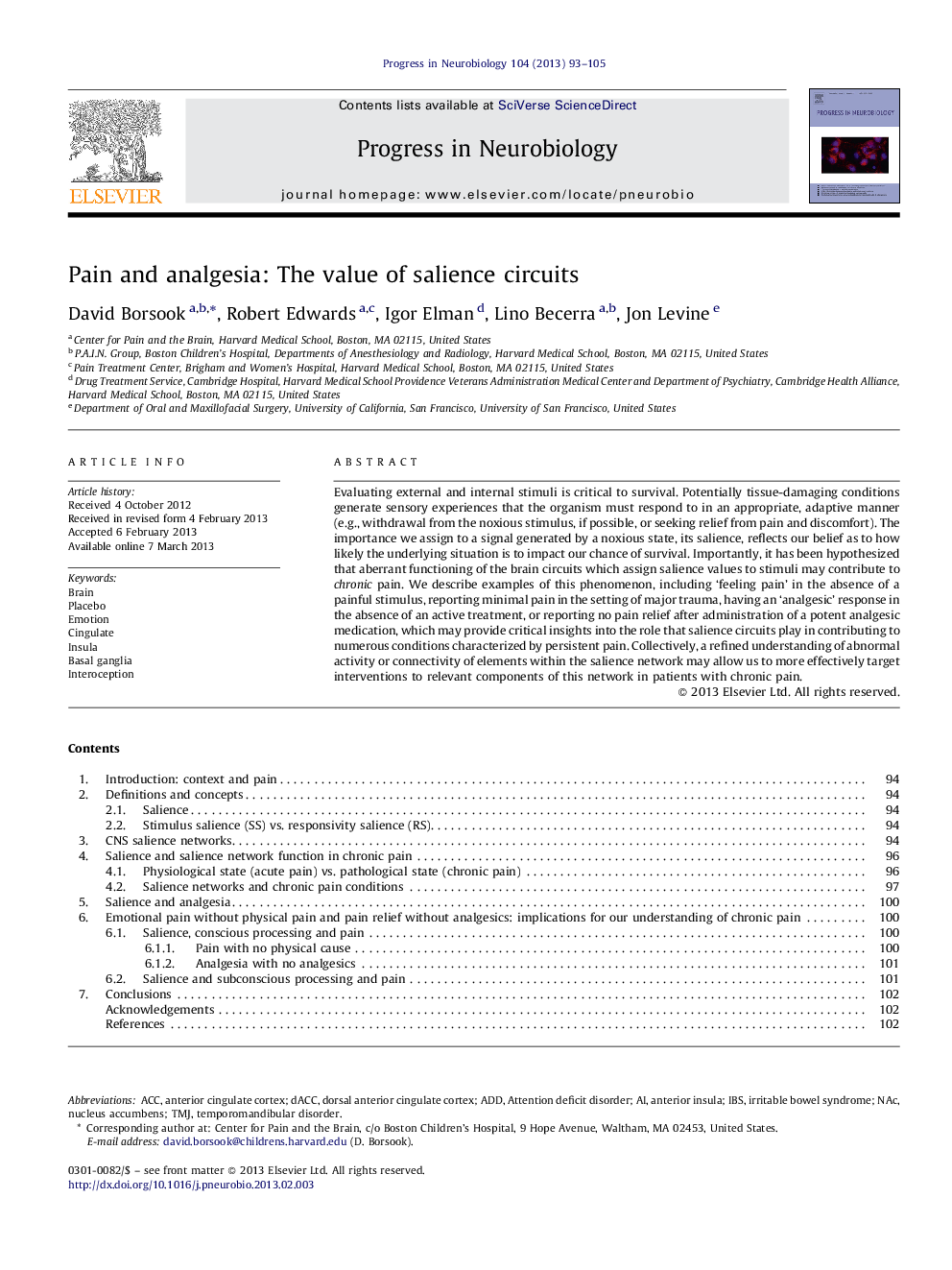| Article ID | Journal | Published Year | Pages | File Type |
|---|---|---|---|---|
| 4353396 | Progress in Neurobiology | 2013 | 13 Pages |
Evaluating external and internal stimuli is critical to survival. Potentially tissue-damaging conditions generate sensory experiences that the organism must respond to in an appropriate, adaptive manner (e.g., withdrawal from the noxious stimulus, if possible, or seeking relief from pain and discomfort). The importance we assign to a signal generated by a noxious state, its salience, reflects our belief as to how likely the underlying situation is to impact our chance of survival. Importantly, it has been hypothesized that aberrant functioning of the brain circuits which assign salience values to stimuli may contribute to chronic pain. We describe examples of this phenomenon, including ‘feeling pain’ in the absence of a painful stimulus, reporting minimal pain in the setting of major trauma, having an ‘analgesic’ response in the absence of an active treatment, or reporting no pain relief after administration of a potent analgesic medication, which may provide critical insights into the role that salience circuits play in contributing to numerous conditions characterized by persistent pain. Collectively, a refined understanding of abnormal activity or connectivity of elements within the salience network may allow us to more effectively target interventions to relevant components of this network in patients with chronic pain.
► Salience networks are brain circuits that interpret our homeostatic condition. ► Salience is a major determinant of whether we consider a situation noxious or not (e.g., nocebo, placebo). ► Knowledge of effects of drugs on salience networks may impact the design of novel therapies for the treatment of pain. ► In chronic pain, integration and interpretation of salient signals may be tonically dysregulated.
